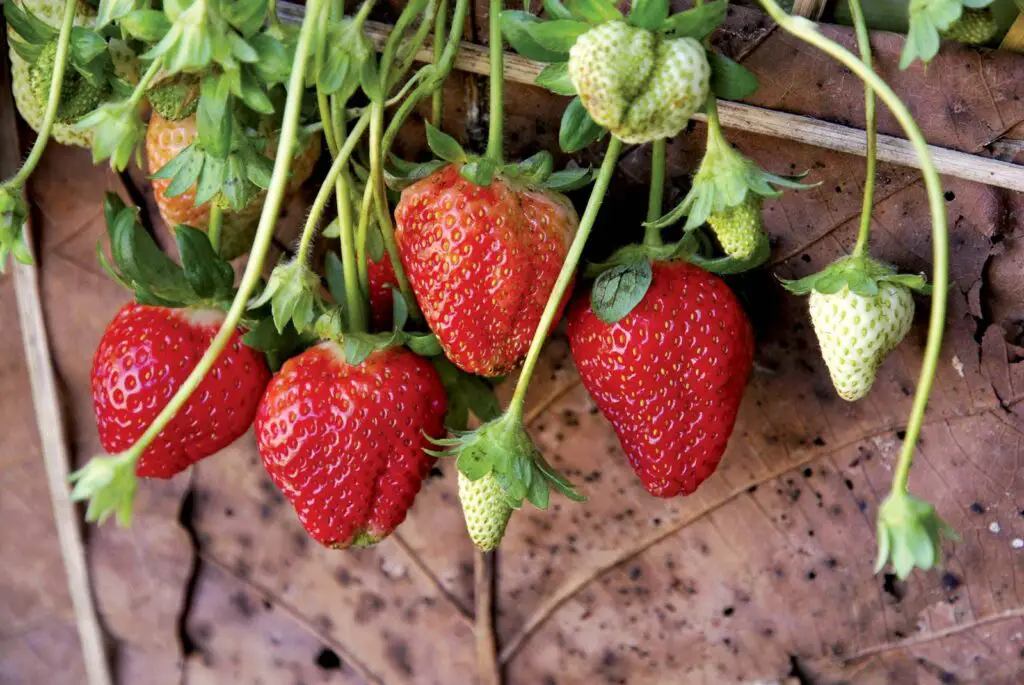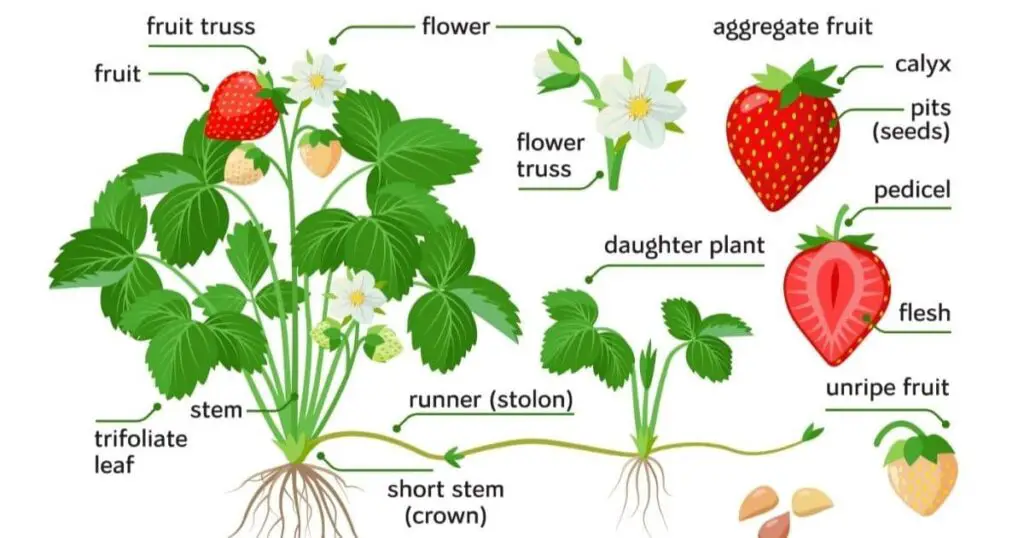Strawberries, those luscious red fruits adored by many, have become a staple in the world of culinary delights. However, have you ever wondered about the botanical classification of these charming berries? In this article, we embark on a botanical exploration to unearth the answer to the intriguing question: What plant family are strawberries in? By delving into the origins and genetic lineage of strawberries, we aim to shed light on their place in the vast and diverse kingdom of plants. Prepare to embark on a journey of botanical discovery as we unravel the secrets behind the captivating world of strawberries.

Introduction
Strawberries, scientifically known as Fragaria × ananassa, are beloved fruits that are enjoyed worldwide for their delicious and refreshing taste. Not only are they a popular choice for culinary purposes, but they also offer numerous health benefits due to their rich nutritional value. In this comprehensive article, we will explore the taxonomy and cultivation of strawberries, their historical origins, common varieties, nutritional content, propagation methods, and various uses.
Overview of Strawberries
General Description
Strawberries are small, juicy fruits with a vibrant red color and a slight fragrance. They are characterized by their unique shape, with a small, green leafy cap attached at the top. Beneath their skin, strawberries have a soft, succulent flesh that bursts with flavor when bitten into. While most strawberry varieties have a red hue, there are also white and yellow varieties available, each with its own distinct taste.
Cultivation
The cultivation of strawberries involves careful attention to detail and adherence to optimal growing conditions. The plants need well-drained, loamy soil with a pH level between 5.5 and 7. The ideal soil should be rich in organic matter and be able to retain moisture without becoming waterlogged. Strawberry plants thrive when exposed to at least six hours of sunlight daily, ensuring healthy growth and abundant fruit production.
Climatic Requirements
Strawberries have specific climatic requirements that must be met for successful cultivation. They prefer temperate climates, with temperatures ranging between 60°F and 80°F (15°C to 27°C). While strawberries can tolerate light frosts, prolonged exposure to freezing temperatures can be detrimental. Adequate rainfall is necessary to maintain optimal moisture levels in the soil, but excessive rain can lead to waterlogged conditions, which negatively impact plant health.

Taxonomy of Strawberries
Kingdom
Strawberries belong to the Plantae kingdom, which encompasses a wide array of multicellular, eukaryotic plants.
Division
Within the Plantae kingdom, strawberries fall under the division Magnoliophyta, commonly known as flowering plants. This division comprises the majority of plant species on Earth.
Class
In the division Magnoliophyta, strawberries are classified under the class Magnoliopsida, which includes plants that produce true flowers and have two seed leaves called cotyledons.
Order
The order for strawberries is Rosales, which is a diverse order containing numerous flowering plant families.
Family
Strawberries belong to the Rosaceae family, also known as the rose family. This family includes a diverse range of flowering plants such as roses, apples, pears, and cherries.
Plant Family of Strawberries
Rosaceae Classification
Within the Rosaceae family, strawberries are classified under the subfamily Rosoideae. This subfamily includes many economically important plant species, including raspberries, blackberries, and strawberries.
Genus Fragaria
Strawberries belong to the genus Fragaria, which encompasses multiple species of flowering plants. This genus is known for its fleshy, edible fruit, making it highly valued by humans and various animal species.
Species Fragaria × ananassa
The specific species to which cultivated strawberries belong is Fragaria × ananassa. This species is a hybrid, resulting from the cross-breeding of two wild strawberry species, Fragaria chiloensis and Fragaria virginiana. Fragaria × ananassa is the most widely cultivated strawberry species due to its desirable characteristics, such as larger fruit size and improved flavor.

History of Strawberries
Origin
The history of strawberries traces back centuries to the temperate regions of Europe and North America. Wild strawberries have been harvested and consumed by humans since ancient times. The Fragaria genus, which includes cultivated strawberries, has its origins in the Northern Hemisphere, with wild species found in various parts of the world.
Cultivation and Domestication
Strawberries were initially cultivated and domesticated by ancient civilizations, such as the Romans and indigenous tribes in the Americas. However, it wasn’t until the 18th century that significant advancements in strawberry cultivation techniques were made. Through selective breeding and hybridization, larger and sweeter strawberries were developed, leading to the cultivation of various modern strawberry varieties that we enjoy today.
Common Varieties of Strawberries
Fragaria × ananassa ‘Albion’
‘Albion’ is a popular commercial strawberry variety known for its large size and excellent flavor. It has a juicy, sweet taste with a hint of acidity that provides a well-balanced flavor profile. ‘Albion’ strawberries are typically bright red in color and have a firm texture, making them suitable for fresh consumption or use in a variety of culinary applications.
Fragaria × ananassa ‘Elsanta’
‘Elsanta’ is another widely cultivated strawberry variety that is prized for its exceptional taste and long shelf life. These strawberries have a bright red color and a firm yet juicy texture. The ‘Elsanta’ variety is known for its aromatic fragrance and slightly tangy flavor profile, making it a popular choice for both commercial and home cultivation.
Fragaria × ananassa ‘Chandler’
‘Chandler’ strawberries are renowned for their large fruit size and intensely sweet flavor. They have a vibrant red color, glossy appearance, and a soft, juicy texture that melts in your mouth. ‘Chandler’ strawberries are highly favored for fresh consumption and are often used in desserts, jams, and other culinary creations due to their exceptional taste and exquisite visual appeal.

Nutritional Value of Strawberries
Vitamins and Minerals Content
Strawberries are packed with essential vitamins and minerals that contribute to their nutritional value. They are an excellent source of vitamin C, providing more than the daily recommended intake per serving. Additionally, strawberries contain significant amounts of folate, potassium, and manganese, which support various bodily functions.
Health Benefits
Consuming strawberries regularly can offer numerous health benefits. The high vitamin C content in strawberries helps boost the immune system, fight off free radicals, and promote skin health. The fiber in strawberries aids in digestion and can help regulate blood sugar levels. Furthermore, strawberries are low in calories and fat, making them a healthy choice for weight management.
Propagation of Strawberries
Seed Propagation
While strawberries can be propagated from seeds, it is not the most common method due to various challenges. Seeds from hybrid strawberries may not yield desirable traits, and the germination process can be unpredictable. However, seed propagation can be a viable option for breeding new varieties or for growing wild species of strawberries.
Runners Propagation
The most common method of propagating strawberries is through runners, also known as stolons. These are long, slender stems that develop from the main plant and sprout new plantlets along their length. Once the plantlets establish roots, they can be separated from the parent plant and transplanted into new locations, resulting in the successful propagation of strawberries.
Uses of Strawberries
Culinary Uses
Strawberries have long been cherished for their culinary versatility and delectable flavor. They can be enjoyed on their own as a refreshing snack, incorporated into various desserts such as cakes, pies, and tarts, or used to garnish dishes and beverages. Furthermore, strawberries are often used to make jams, jellies, preserves, and sauces, allowing their delightful taste to be enjoyed year-round.
Cosmetic Uses
Strawberries have also found their way into the cosmetics industry due to their beneficial properties for the skin. Their natural acidity can act as a mild exfoliant, helping to remove dead skin cells and promote a healthy complexion. Additionally, strawberry extracts are often included in skincare products for their antioxidant and anti-inflammatory properties, which can aid in reducing signs of aging and skin irritation.
Conclusion
Strawberries hold a prominent place in our gardens, kitchens, and hearts. Understanding the taxonomy, cultivation techniques, historical origins, and nutritional value of strawberries allows us to appreciate these delightful fruits even more. Whether enjoyed fresh, incorporated into delicious recipes, or utilized for their cosmetic benefits, strawberries continue to capture our taste buds and provide us with countless reasons to indulge in their sweet, tangy goodness.



